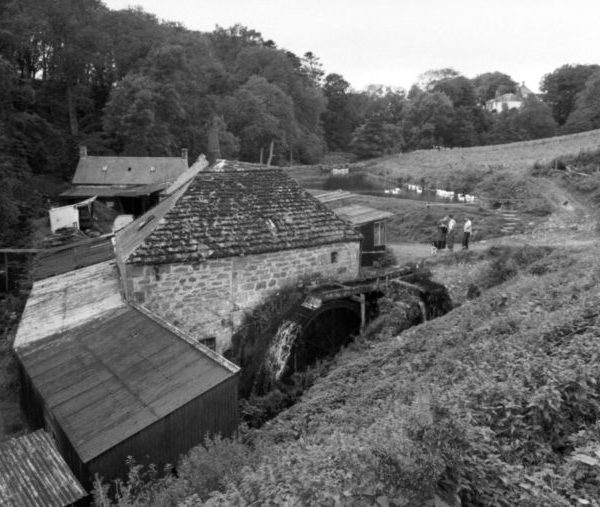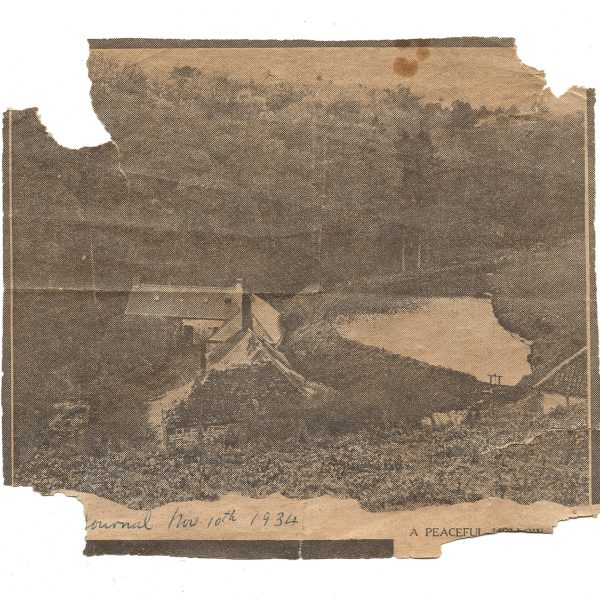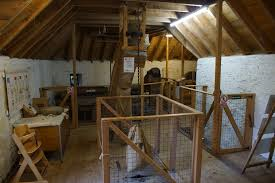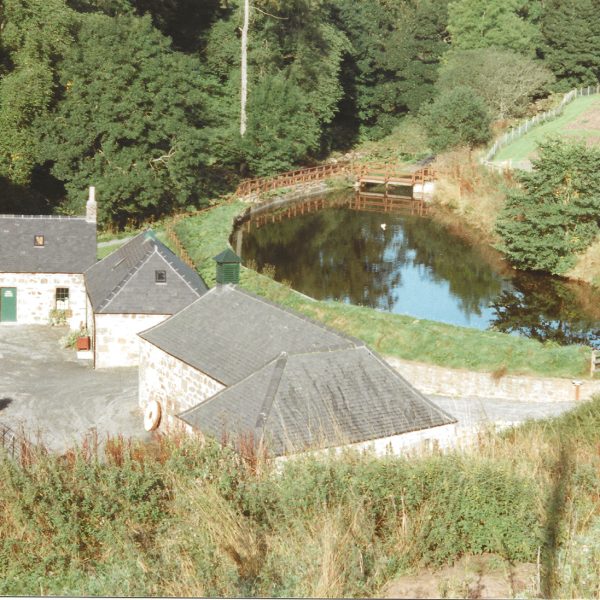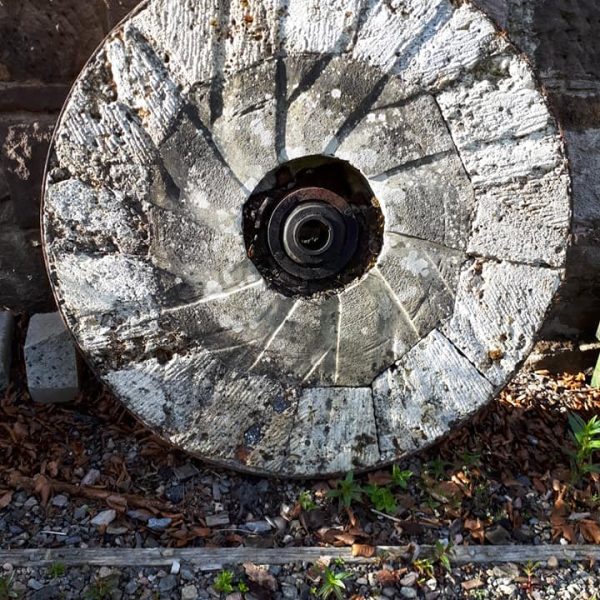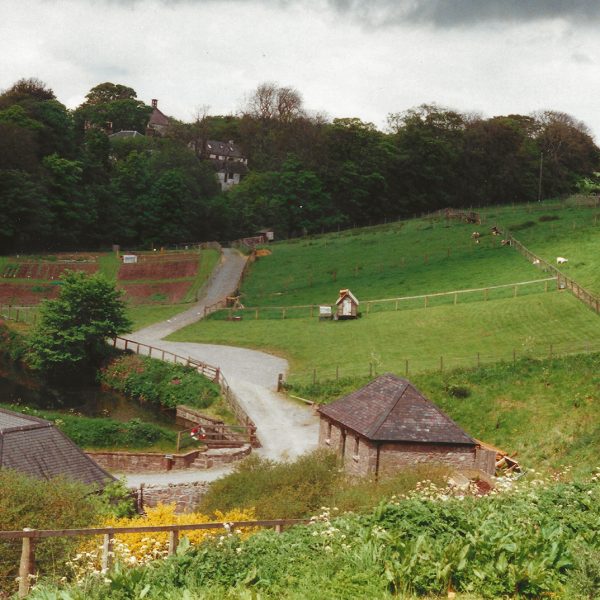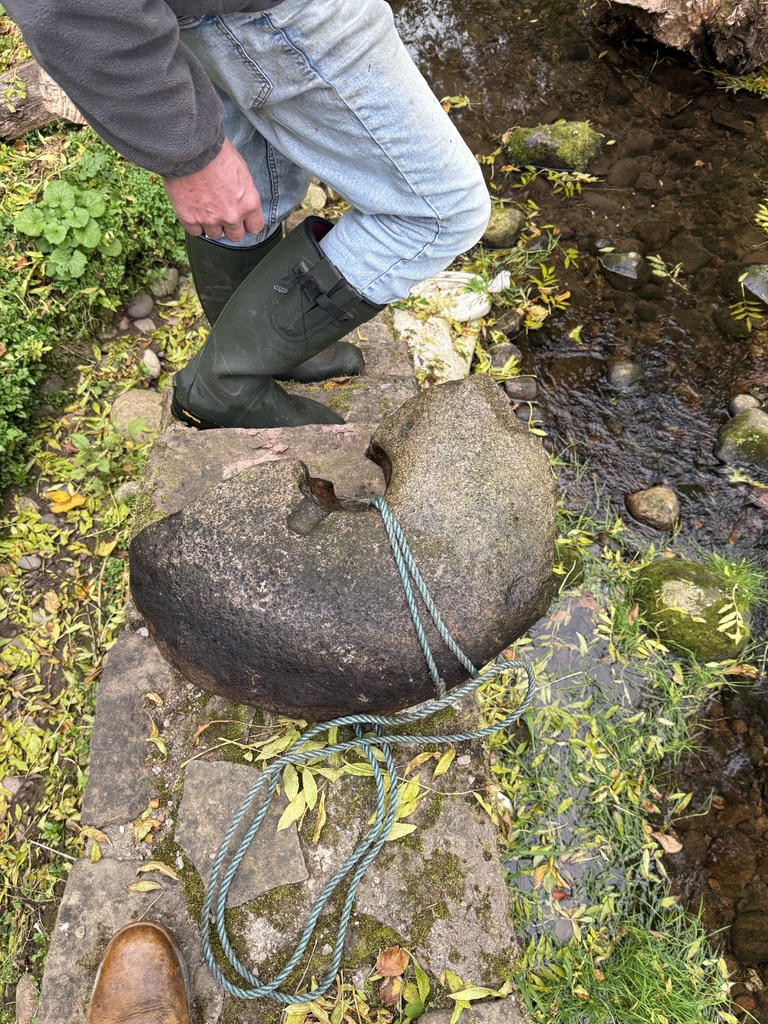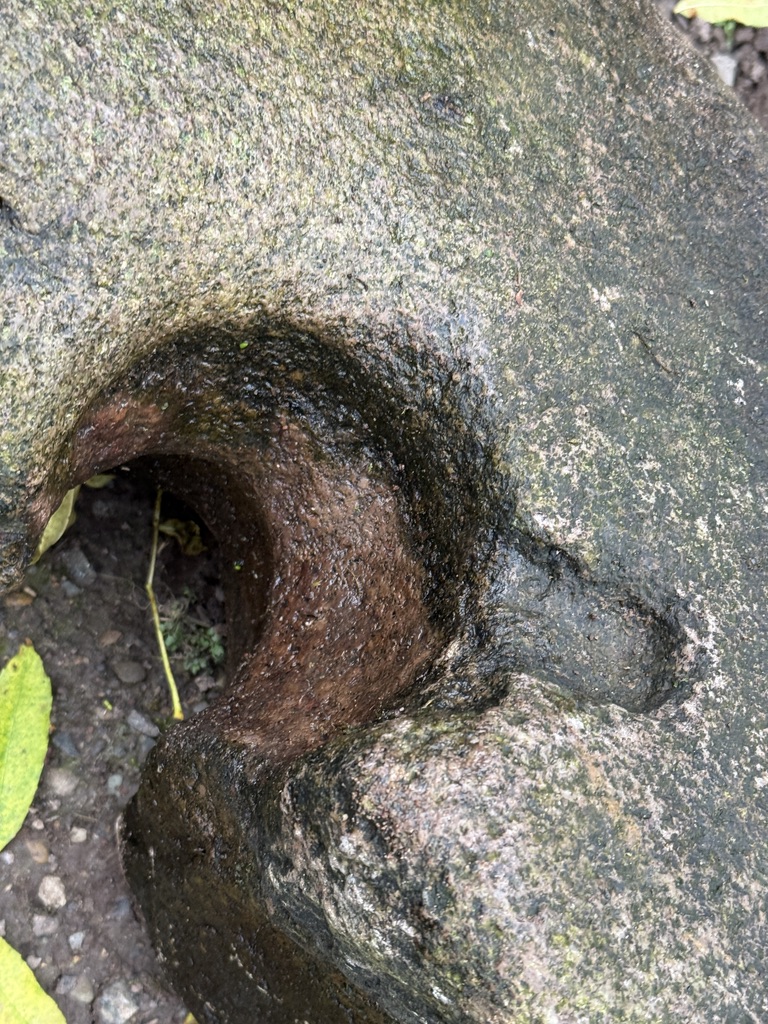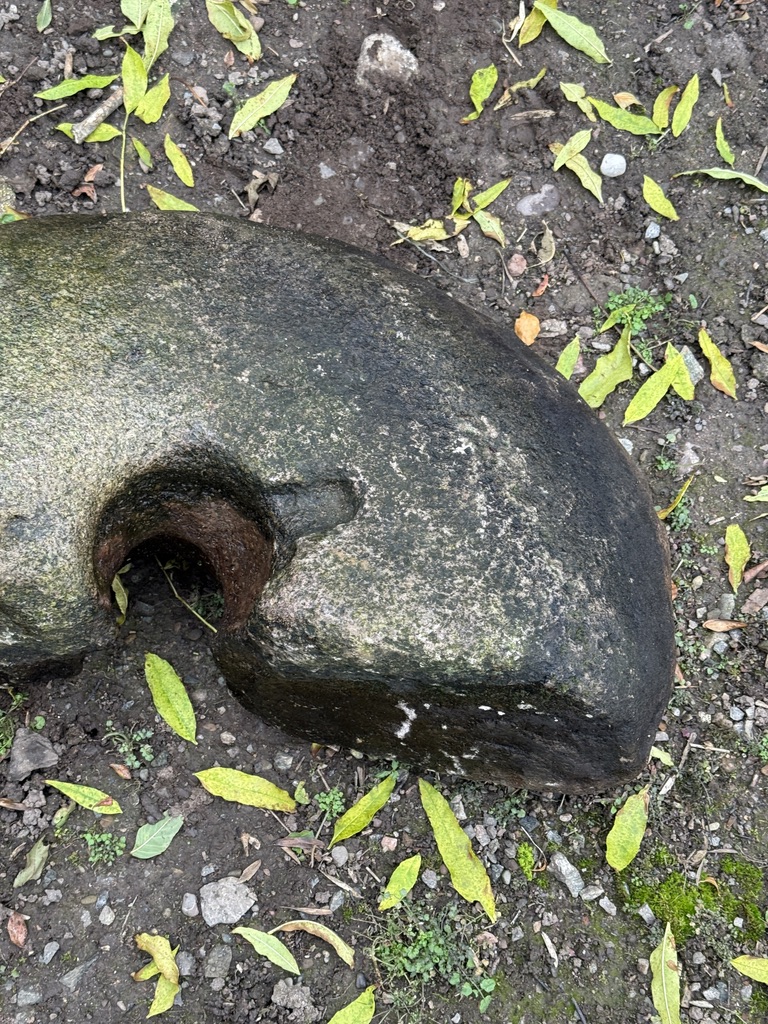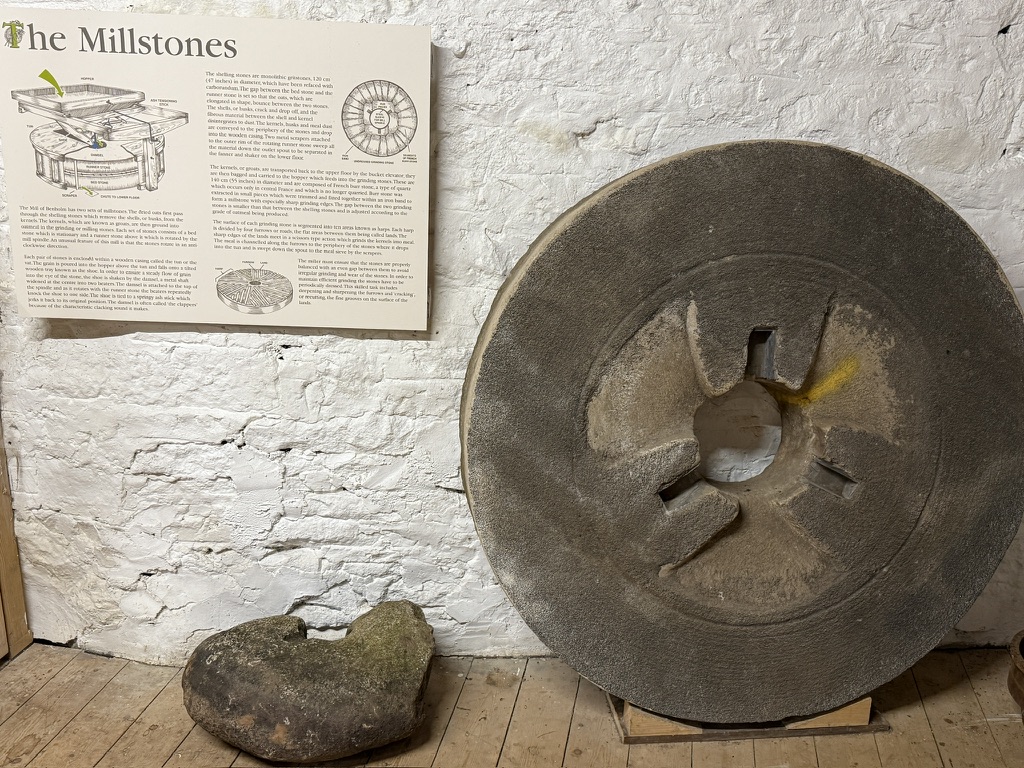It is assumed that there has been a mill where the current Mill of Benholm sits since the 12th century, at a time when Benholm started to flourish more.
Benholm has a long history. Lying in the centre of the historic parish of the same name there has been a church on the site since at least 1242AD. The Mill has similarly early origins and it is probable that there has been a mill at Benholm since at least the 12th century, a charter in 1492 gives further evidence of the mill when John and Isabel Lundy granted the lands and barony of ‘Benhame’ with the mill to their son, Robert. In the following century the mill passed by marriage from the Lundy family to the Keiths, the powerful Earls Marischal, as records show. In 1566 Elisabeth Lundy, wife of Robert Keith, son of William , Earl Marishall resigned the lands and mill of benholm into the hands of Queen Mary of Scotsin favour of her spouse and herself. But in the same year a charter by Henry and Mary, King and Queen of Scots, granted Robert Keith and Elizabeth Lundy the same lands and mill and erected Benholm into a free Barony. The nearby Benholm Kirk displays the Keith Monument from 1620. The first miller officially recorded was Archibald Brown in 1696.. Parts of the existing mill building date back to the 18th century (1711 was engraved on a stone and visible until recently), although the majority of buildings on the site are Victorian, with the mill being rebuilt in 1817. By the beginning of the 18th century, if not long before, there was a well established community at Benholm.
New bridges got built for the historic Coach Road, the bridge over the Burn of Benholm in 1729 (Birnie Bridge) and the bigger bridge (Benholm Bridge) over the Castle Burn in 1795/96. This was crucial for the main route from Montrose to Aberdeen in the 18th Century, known as the “post road” or the “auld road”, which passed through the settlement across those two bridges.
The Mill of Benholm was milling oats until 1982 when the last active miller of Benholm Lindsay C Watson died. Mr Watson was the first miller in history to have bought the Mill of Benholm from the local landowner. The mill stones stopped their grinding work, the fires of the kiln extinguished for good and the noise of the waterwheel was not to be heard anymore.
But only a few years later the then Kincardine and Deeside District Council bought the Mill of Benholm in 1986 and an extensive restoration project was undertaken. The Mill of Benholm opened again in 1995 to the public as visitor centre, museum, café, a place to meet and learn, and a haven of peace.
Due to health and safety issues the Mill of Benholm was closed in 2014 and has been mothballed since then. `it is dearly missed by the local community and visitors alike.
In April 2024 the Mill of Benholm Enterprise has become the new owner of the Mill of Benholm and has started the process to take this Gem of the Mearns out of its decade long hibernation and return it to its former glory again.
In 2025 an old millstone was found in the Burn of Benholm near the Mill of Benholm. Historic Environment Scotland commented on thre find as follows “”It is the upper part of a millstone but a lot smaller than if it were in a conventional vertical watermill in which stones rotate on a vertical spindle via gearing from a water wheel with a horizontal axle. I think it is not a hand quern because I don’t see a drill hole towards the outer edge for a handle. It could be on the missing piece but I don’t see evidence of it where the stone is broken. There was an iron strap across the top hole through which the grain to be ground is poured, and I think this means it was a powered set of millstones, the rotation coming from below to turn the upper stone, and adjustments able to be made to keep them just the right distance apart. A quern stone would simply be lifted up and use its own weight to stay in place. It wouldn’t be held in place by an iron bar. Sometimes old mill stones like this would be re-used as the hinge for a door, at thresholds of cottages in the highlands, and are I think evidence that horizontal mills were more widespread than hitherto thought. There recently has been found evidence in the Trossachs at Killin Mill for the base stone on which a horizontal or Norse Mill rotated. The place in Scotland where most horizontal mills survive is Shetland, or you can visit the Historic Scotland property Click Mill in Dounby, Orkney, but as well as in Norway there are large numbers in Southern Europe, from Iberia to the Balkans. It is exciting to have more evidence coming from Scotland south of the Highlands, if it is the stone of a horizontal mill. It used the kinetic energy of a jet of water, not needing a large volume of water provided there is a sufficient fall, which I think is the case at Benholm Glen. As for dating I’d agree that it belongs to a predecessor to the mill that was built in 1711. It might even be medieval.”
